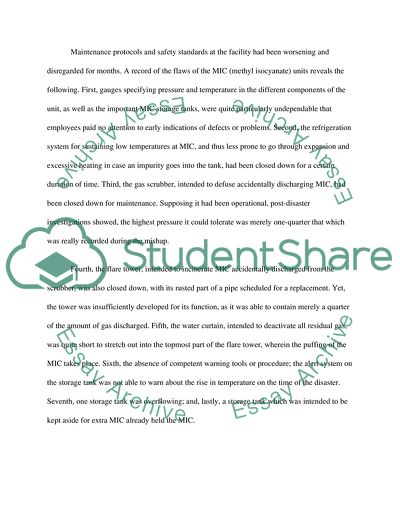Cite this document
(The Bhopal Gas Disaster Assignment Example | Topics and Well Written Essays - 3000 words, n.d.)
The Bhopal Gas Disaster Assignment Example | Topics and Well Written Essays - 3000 words. https://studentshare.org/engineering-and-construction/1841430-engineering-disaster
The Bhopal Gas Disaster Assignment Example | Topics and Well Written Essays - 3000 words. https://studentshare.org/engineering-and-construction/1841430-engineering-disaster
(The Bhopal Gas Disaster Assignment Example | Topics and Well Written Essays - 3000 Words)
The Bhopal Gas Disaster Assignment Example | Topics and Well Written Essays - 3000 Words. https://studentshare.org/engineering-and-construction/1841430-engineering-disaster.
The Bhopal Gas Disaster Assignment Example | Topics and Well Written Essays - 3000 Words. https://studentshare.org/engineering-and-construction/1841430-engineering-disaster.
“The Bhopal Gas Disaster Assignment Example | Topics and Well Written Essays - 3000 Words”. https://studentshare.org/engineering-and-construction/1841430-engineering-disaster.


